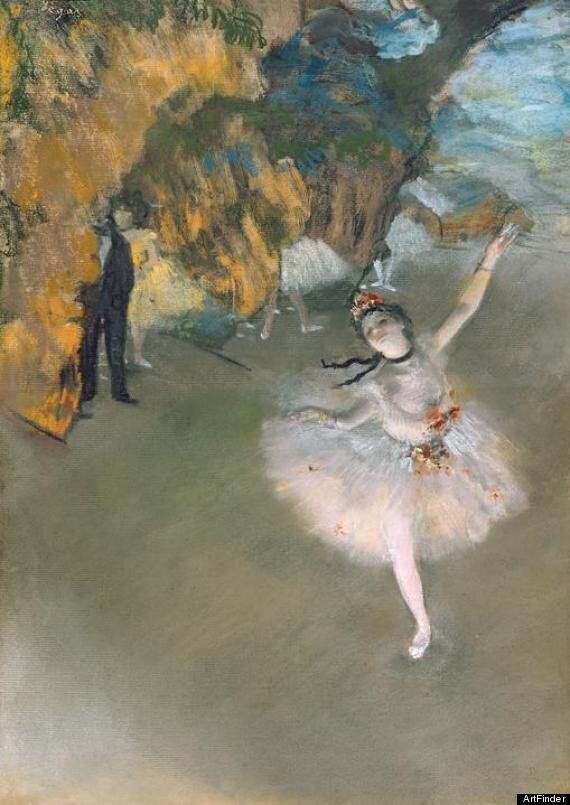
The Star, or Dancer on the Stage by Edgar Degas (1878)
Blink and you might miss it – this painting by Edgar Degas appeared in James Cameron’s Oscar-winning film Titanic, along with two other masterpieces by Claude Monet and Pablo Picasso (see video below).
“He won’t amount to a thing” one of the characters sniggers to their owner Rose, a nod to the enormous acclaim both painters were to have in the years the followed the disaster.
Of course, it’s worth mentioning that no Degas, Monet or Picasso paintings actually went down with the Titanic 100 years ago - and that these characters (spoiler alert) were entirely fictional.
Nevertheless, as we remember the 100 year anniversary of the sinking of RMS Titanic on 15 April 1912, it’s without a doubt that many of us will revisit one of the most successful films in cinematic history, and we think it necessary to shed some light on that elusive Degas painting that Rose wafts about in her first class cabin.
At the end of the 19th century ballet dancers – both during performance and rehearsal – were frequently the subject of Edgar Degas’ paintings. Degas himself is considered to have been one of the founders of Impressionism, having organised the first Impressionist exhibition in 1874, and the subject of dance perfectly complements the Impressionists’ preoccupation with suggesting fleeting light and movement.
Degas especially identified with the subject of the dance; when asked about the reason for this choice, he pointed out his admiration for classical sculptures - he found that same beauty in the ballet dancers. And when executing the paintings, he focused on the dancers’ gestures and poses as they practiced routines.
In this particular painting we see a young prima ballerina right after her performance. Degas displays his mastery in the depiction of movement; the bright colours move our eyes around the canvas and eventually focus our attention on the luminous ballerina, even though she is not in the centre of the picture - a compositional choice that suggests that she was caught accidentally as opposed to posing. With her white dress, pale skin and subtle features, Degas showed his subject’s femininity and delicacy; features that he thought every ballerina should have.
This work - much like the dancers portrayed by Henri de Toulouse-Lautrec - paints a portrait of late 19th century Parisian life, a subject that owing to its bohemian romance continues to mesmerize today (even the likes of James Cameron).
Artyfacts:
- Unlike many other painters Degas did not continue to paint until he died; his eyesight failing he instead turned to collecting the art of his contemporaries.
- “Conversation in real life is full of half-finished sentences and overlapping talk. Why shouldn’t painting be too?” - Edgar Degas
- Degas painted so many horses because he could afford to. Unlike the poorer impressionists that couldn't even afford paint, such as Monet, Degas could afford to follow fashion. Horse racing came from England and was a past time only the aristocracy could afford.
Degas' dancers:
Artwork inspired by the Titanic: